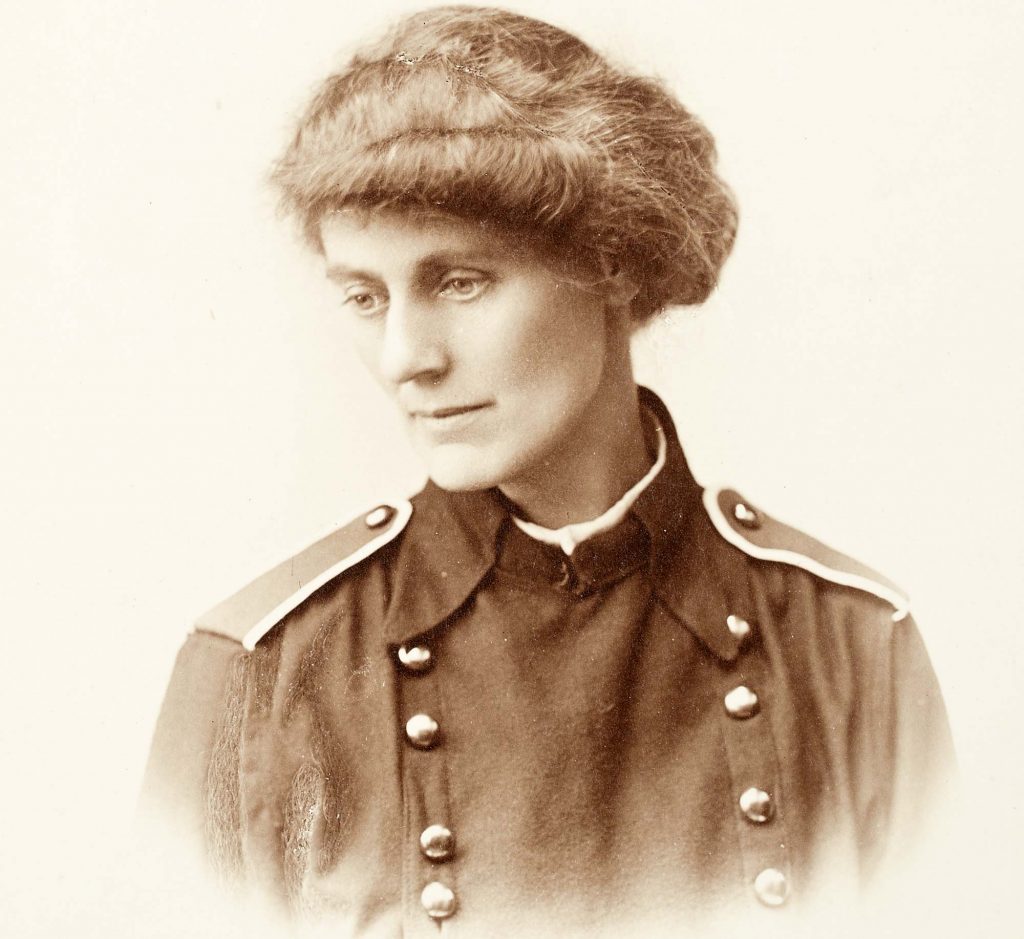
A century ago a change began in Ireland but some radical change can take centuries. An Irish Countess (married to an undocumented polish immigrant) was elected Minister for Labour for Sinn Féin. This was a first as women had yet to gain the right to vote. The US-based Irish Republican Brotherhood had pushed through an unpopular rebellion even after leaks to the Empire’s Intelligence Services. The rebellion failed but the ensuing military punitive overreaction – executing all but two military leaders – ensured further resistance. De Valera, a Spanish-American catholic, and that same indomitable Countess Constance Markievicz (née: Gore-Booth) survived and were both active in the ensuing war for independence, a savage fight which brought the British Empire to the negotiation table.

Countess Constance Markievicz
Lloyd George offered partial independence (26 of 32 counties) adding a somewhat ridiculous clause that the Empire’s land rights in Ireland be maintained. Griffith and Collins signed the Treaty to avoid “terrible and immediate war”. They were both dead within a year and Ireland was in the throes of a third consecutive civil war between those who accepted the Treaty and those who wanted a republic. The compromised Irish “Free” State was ruled for a century by various cocktails of Fianna Fáil and Fine Gael from 1927 till today.
This Treaty imposed a border on the Island of Ireland not to mention many British landlords. Last month this same border became the UK’s land border with the European Union. Fast forward to February 8th and Ireland seems to be experiencing the end of its civil war legacy parties. Since the last election these have been in a secretive coalition to maintain power. While the results of this national election seem to indicate that the Irish people have finally settled their civil war the land issue remains.

The two party system of Fianna Fáil and Fine Gael has proven extremely resistant to change. They survived the formation of the Free State; two constitutions, the Second World War; Ireland’s joint entry into the common market (with the UK); a brutal three decade civil war in the North of Ireland over civil rights, nationalism and religious bigotry; various hyper-capitalist booms and bust with wild variation in land and property sectors, extreme tax-free deregulated of technology, pharmacy and banking multinationals (making Ireland a pimple on the arse of the European Commission who ordered Ireland to take tax Apple 13 Billion Euros while both Fianna Fáil and Fine Gael steadfastly refused to do so).
Finally just two weeks after Brexit something finally happened, the chimera of Irish political choice morphed into something new and yet old: Sinn Féin is back as the largest party in the Irish Republic to add to their power in Northern Ireland. Green jersey capitalism had become distinctly nationalist. Ireland wasn’t green in any environmental sense, quite the contrary the nation is the laggard of Europe on Greenhouse gases but it remains green in a black faced sheep grazing on bare hillsides kind of way. As the biggest kid playing in the green sandbox of Irish politics Sinn Féin has an opportunity to influence this playground for tax-free US capitalism, a financial sector dedicated to laundering the revenues of former Russian state companies and an expensive selection of tax lawyers on the South Bank of the Liffey who rewrite Ireland’s tax laws. The question is will anyone want to play with them? Housing and health were the major issues offered to the voting punters the second week of February. Coalition taboos and non-coalition rhetoric be damned, it’s again time for the real power struggle. Let the negotiations begin!
For Ireland’s non-property owning residents this represents somewhat of a conundrum. What will this mean for Ireland’s coddled housing markets and homelessness? Will US property speculators run screaming for the hills throwing their REITS agreements behind them? Could Sinn Féin – if they manage to get into power –really tackle Irelands property morasse, would they? Might we see Croatian construction workers flying to Ireland via Ryanair for zero-hour contracts to build public housing? Could Polish families without titles of nobility finally be offered a chance to escape their hidden privatised badly-built council housing estates on Dublin’s unfashionable west side? Will Dubliners finally be offered an opportunity to move to somewhere they might actually want to live? Will this reduce living costs? Will it lead to reduced commuting? What about free public transport that works for everyone? Will Sinn Féin really offer some hope for Ireland’s afflictions in housing, taxation, health and the environment?
Maybe not!
Housing oligarchs are eyeing a coalition which might, just might, maintain contractor-capitalism into its second century. Somewhat ironically, would mean a reversal of the Fianna Fáil — Sinn Féin split in 1927. We’re back to the age of land rights, borders and treaties. As one phase of civil war politics in Ireland is over, the reason this civil war was fought remains a divisive one! Property rights and political division are alive and well in 21st. century Ireland on both sides of the EU’s new border.

Tony Phillips edits and writes books on national sovereignty Vs. regional integration, national debt and political ecology. He recently edited Joseph Stiglitz, Viçenc Navarro and (former Argentine economics minister) Roberto Lavagna in Europe on the Brink (Zed Books). He holds a Masters in Economics on regional political economics and a B.Sc. from UCD, Dublin. Currently, Tony divides his time between Buenos Aires, Patagonia and Dublin and is writing on political ecology. His mum lives in Dalkey, Co. Dublin.

